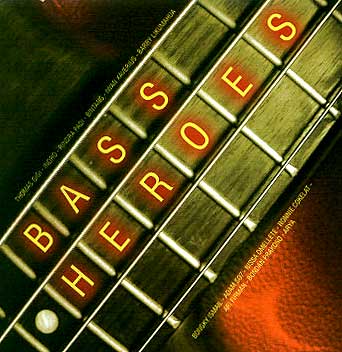Physical considerations
Like all non-fret string instruments, performers must learn to place their fingers precisely to produce the correct tone. More frequent hand movements required by the size of the instruments that increase the likelihood of intonation errors. For bassists with smaller hands, a large space between the pitches may be a significant challenge, particularly in the lowest range, where the largest space between the notes.
Performing on the bass can be physically demanding because of the large and thick strings. Also, the space between the notes on a fingerboard is huge because the scale length and string spacing, so players have to shift positions often. Increased use of play techniques such as thumb position and modifications to the bass, such as the use of lighter-gauge strings at lower voltages, has lightened the difficulties to play the instrument. Bass part has relatively few parts fast, double stop, or a big leap in range.
Until the 1990s, the double bass the size of the children were not widely available, and the large size of bass means that children are not able to start playing the instrument until their hand size and height would allow them to play 3/4-size model (available The most common size). Starting in 1990s, smaller half, quarter, eighth and even sixteenth-size instruments become more widely available, which means that children can start at a young age.
Volume
When writing for the solo bass in the orchestra, composer or music room, usually ensures a light orchestration so as not to obscure the bass. While amplification is rarely used in classical music, in some cases where a concerto soloist with orchestras perform bass management, amplification euphemistically called acoustic enhancement may be used. The use of microphones and amplifiers in the classical setting has sparked debate in the classical society, as "... purists maintain that the natural acoustic sound [Classical] voices of the instruments in a given hall should not be changed."
Although the size of the instrument, not as hard as other instruments because of low coverage. In a large orchestra, usually between four and eight bassists playing in unison. In the largest orchestra, the bass may be as many as ten or twelve players, but modern budget constraints make huge part of this bass.
In the non-orchestral settings, such as jazz and blues, amplified through a special amplifier and loudspeakers are used. Bluegrass, and jazz players usually use less amplification of the blues, psychobilly, or jam band players. In the latter case, the high overall volume due to other amplifiers and instruments can lead to acoustic feedback, a problem exacerbated by the large surface area and volume bass interior. Feedback problem has led to the development of instruments such as electric upright bass, which imitate the playing characteristics of the double bass.
Body and hand position
Double bassists either stand or sit to play the instrument. When standing, the high double bass' is set (by adjusting the endpin) so that players can easily put your right hand close to bridge, either with a bow (arco) or revoked (pizzicato). While personal opinions vary, often endpin is set by aligning the first finger in first position or the half with a good eye level players. While sitting the bench (as measured by long pants inseam players) are used. Traditionally, standing has been preferred by soloists, although many now choose to play seated. Advocates play while sitting on the bench of the opinion that it's easier to do the high-register, because they can still be an instrument between the knees.
When playing on various instruments at the top (above the G below middle C), the player shifts his hand out from behind neck and flat out, using the thumb to press the strings. -Technique is also used in the position of the thumb-called cello. While playing in thumb position, most players do not use the fourth (little) fingers, because it is too weak to produce a reliable tone (this also applies to a cellist).
Transportation
large size and fragility of the double bass makes it relatively difficult to handle and transport. Most bassists use soft cases, referred to as the show bag, to protect the instruments during transport. Basic, unpadded bags used by the students' performances more or less cost under 100 USD, while the thick padded bags for the show professional players typically cost approximately $ 500 USD. Some features filled with examples of strap backpacks retail for approximately $ 1,000. Some bassists take their bow in the bow case hard. Players may also use small carts or pin-end mounted wheel to move the bass. Hard flight case has a soft interior and exterior resilient carbon fiber, graphite, fiberglass, or Kevlar. Either cost more or less hard-case 500 USD to more than 2500 USD-tended to limit their use to the professional tour.

Introduction
We will give you the opportunity to broaden their knowledge and learning
indirectly and is free as long as you can
follow all the programs that we recommend,
from the current master of the most influential bass instruments.
We share their techniques and unique individual with your knowledge,
aims to develop your skills repertoire, natural agility and smooth music on the bass.
You may already have formal musical training, or even self-taught.
Perhaps you are a midfielder or even a working professional.
But if you recognize the need to develop what you know and serious
desire to control more then come and let your passion,
skills and abilities are challenged to grow from where it now!


